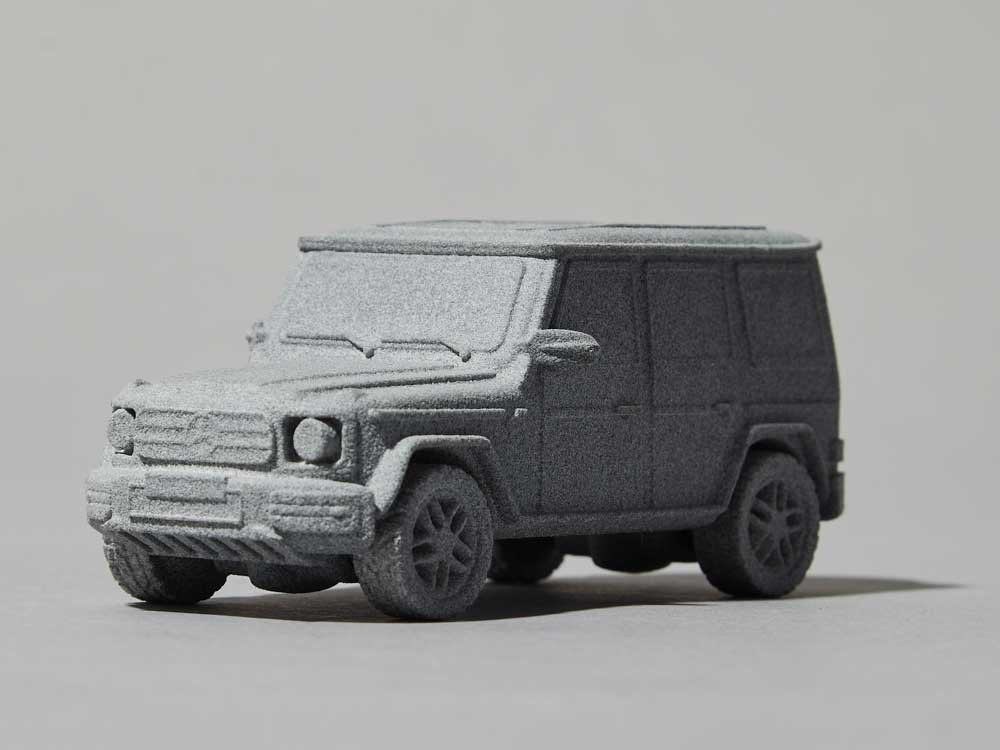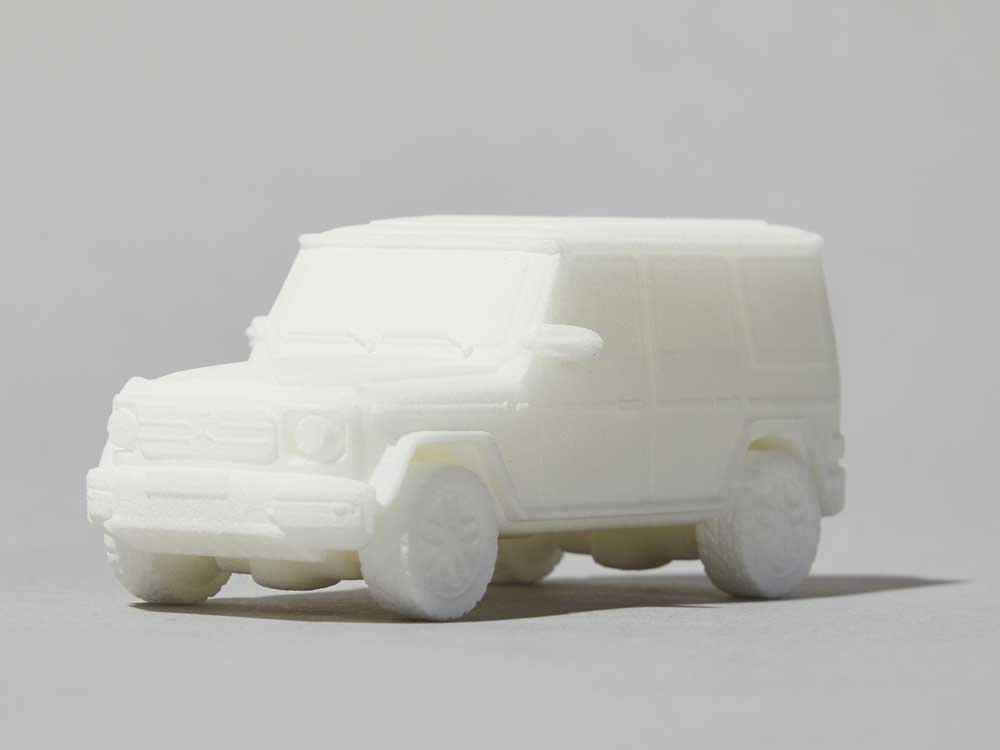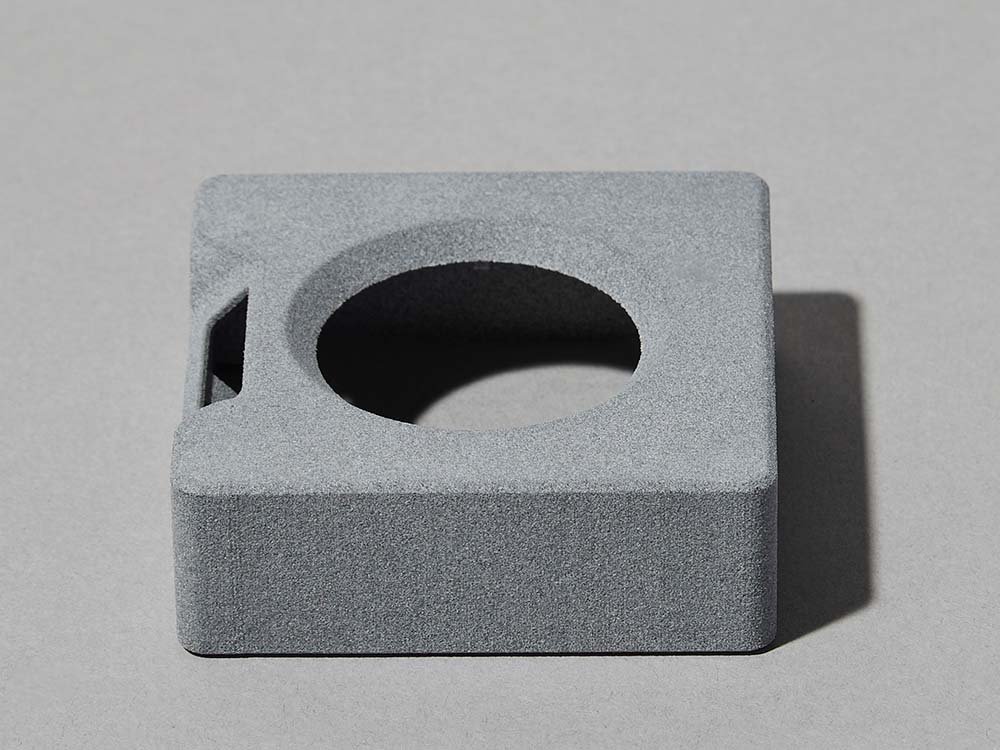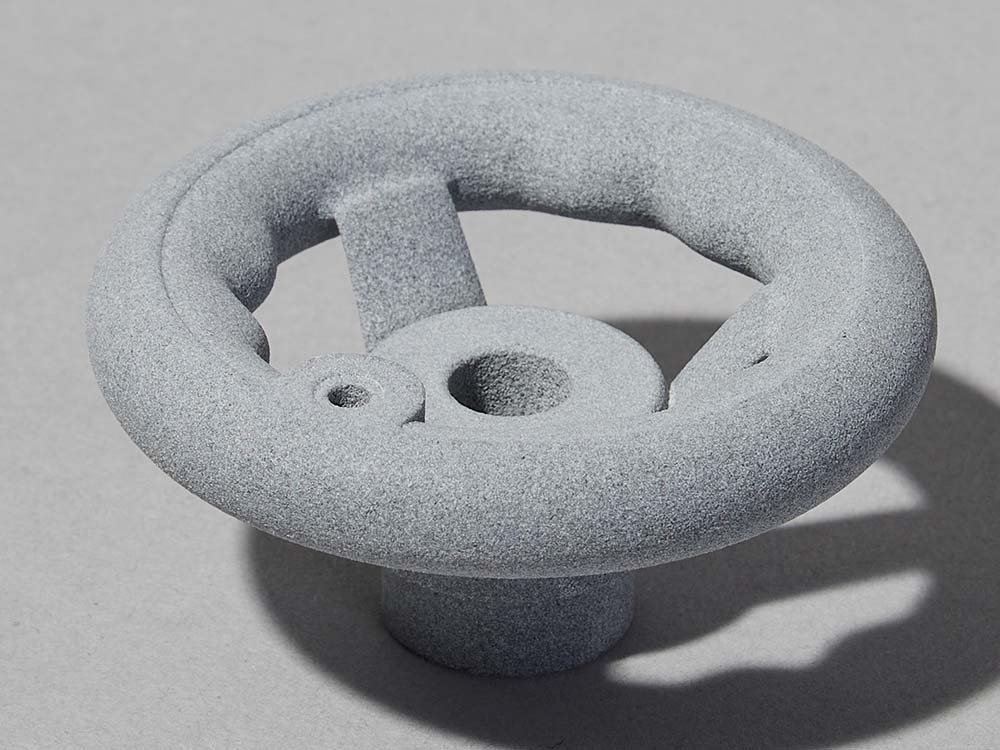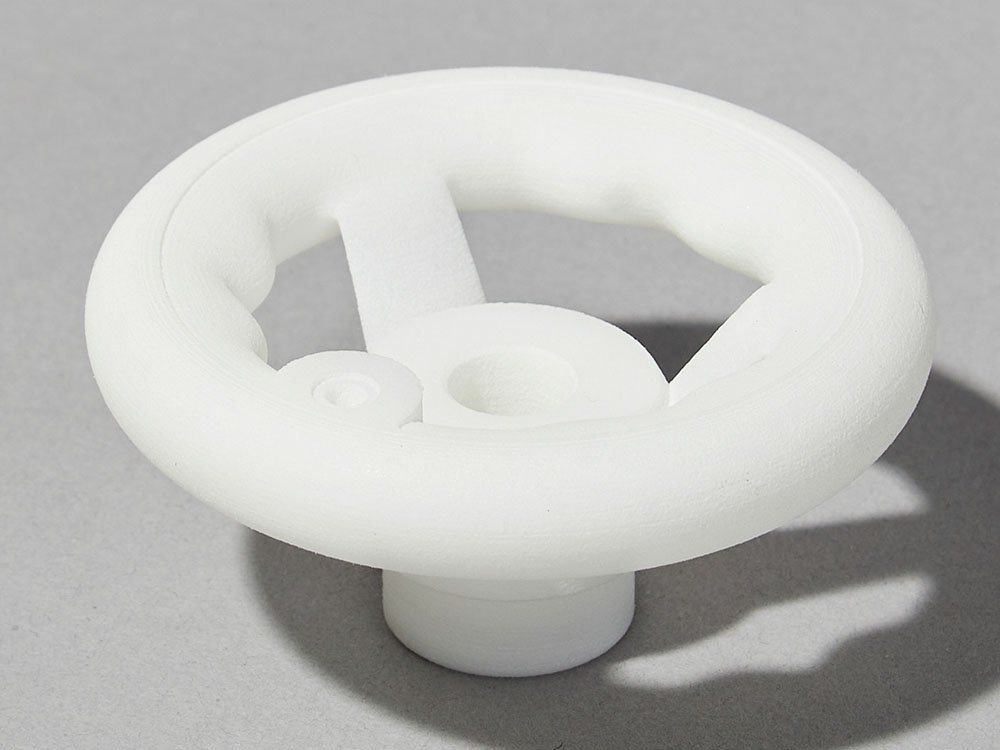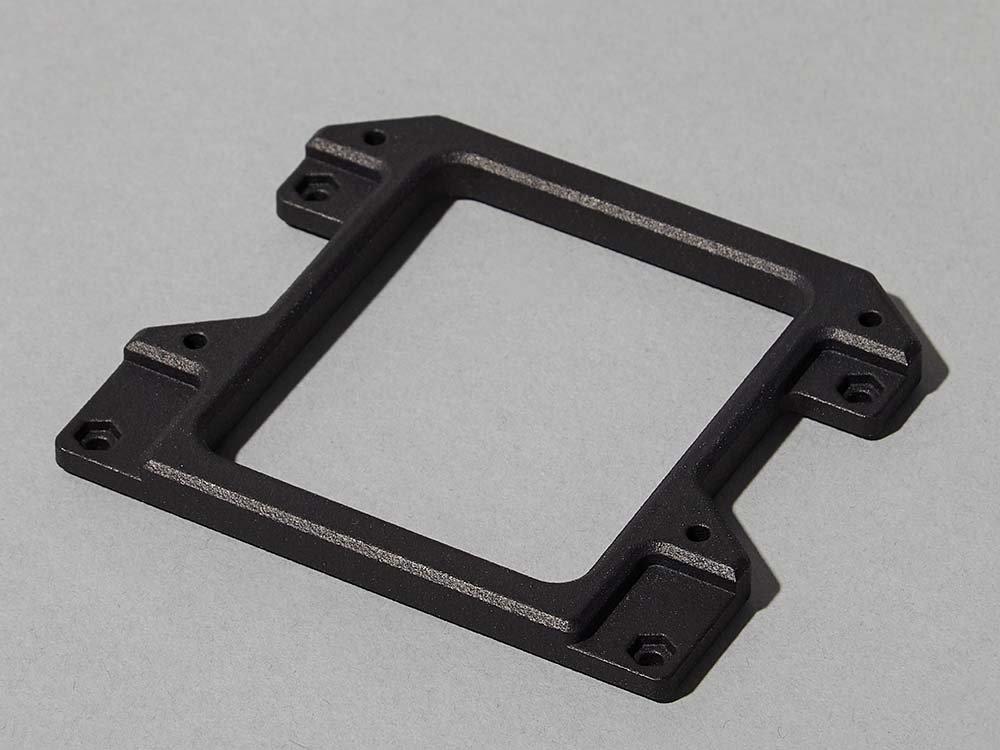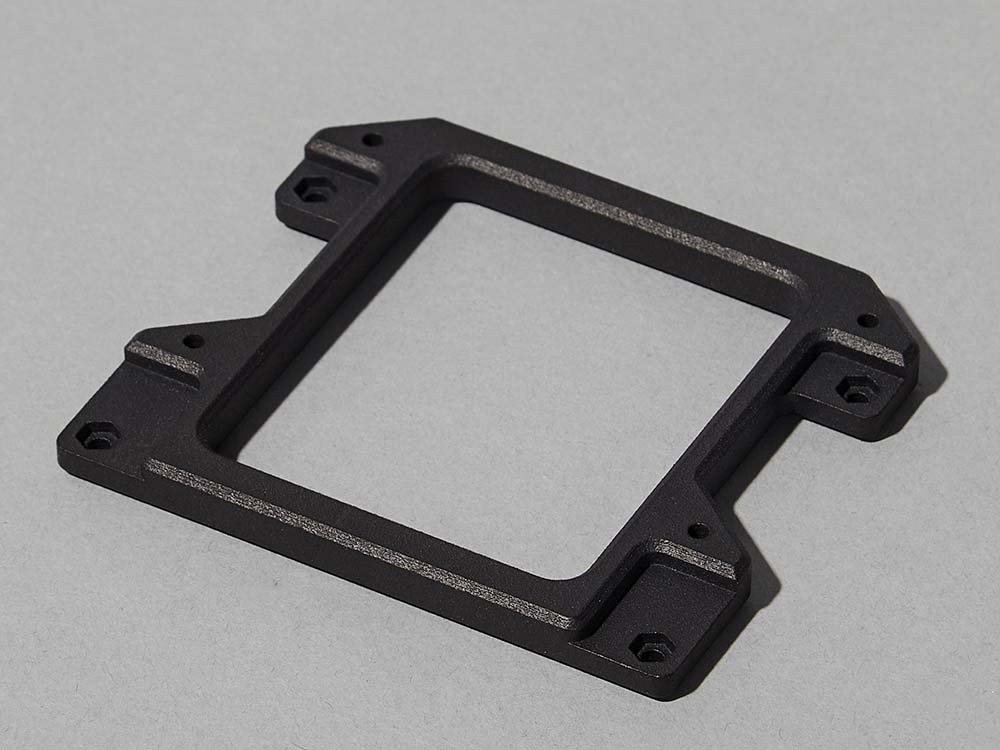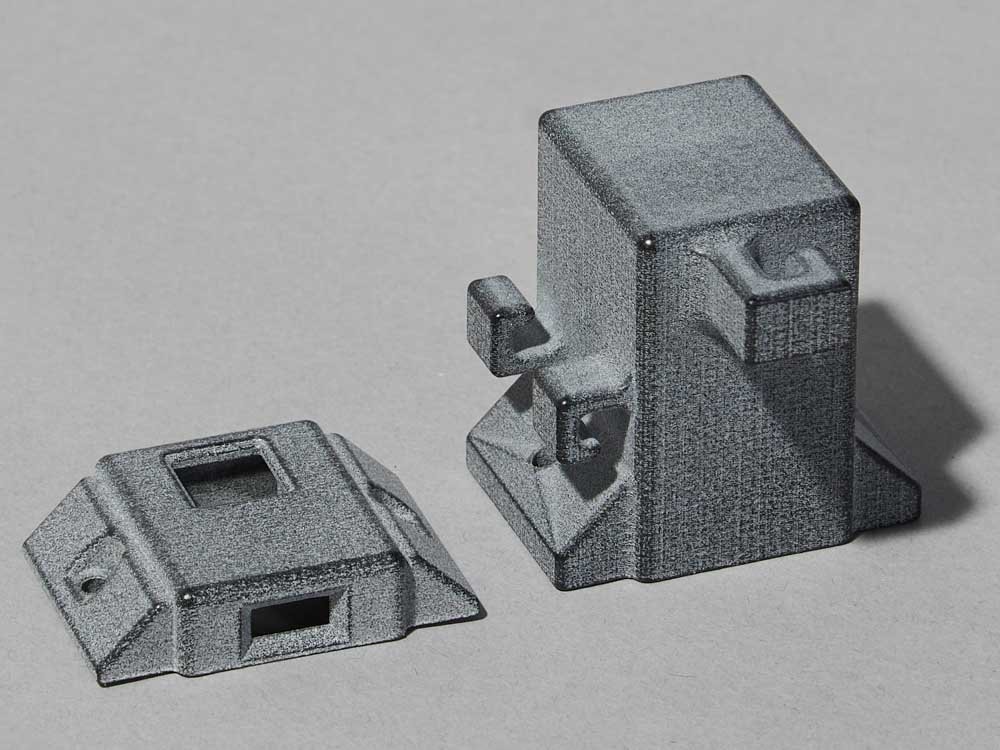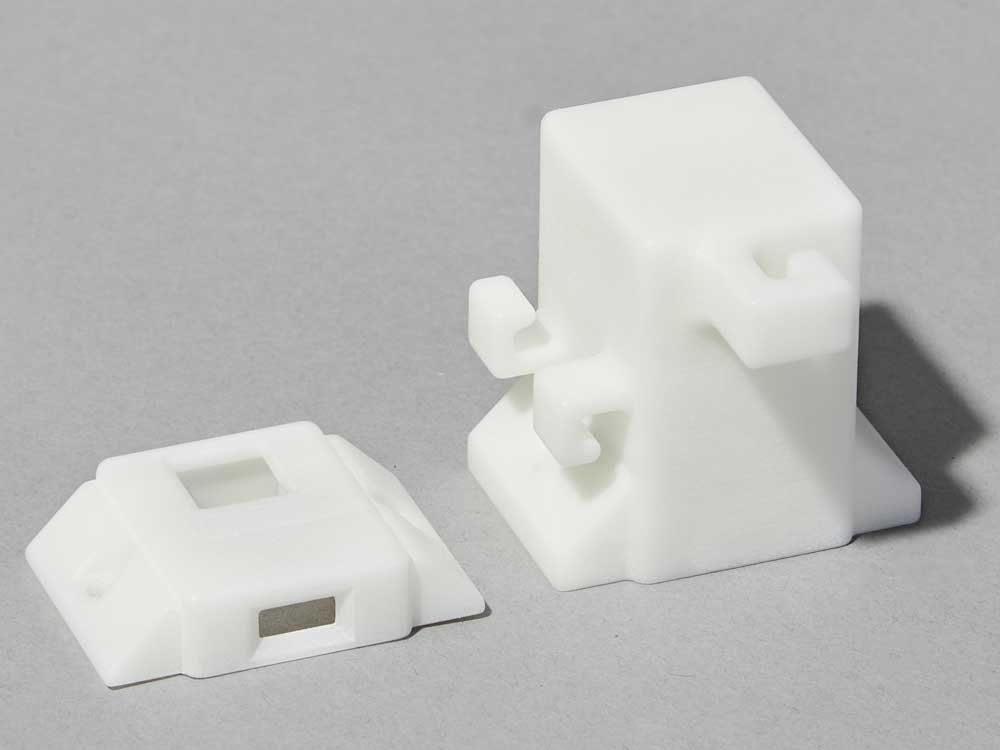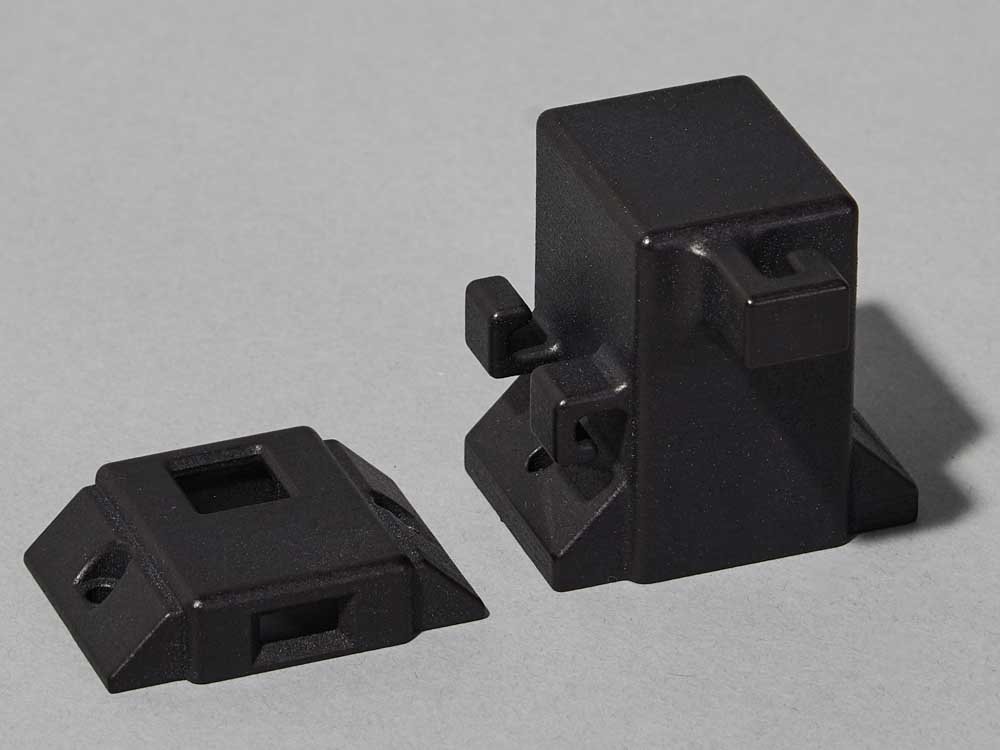At 3D People, we’re here to provide engineers and designers with the tools and knowledge to fully harness the power of Additive Manufacturing, also known as 3D printing. This article explores the similarities and differences between Multi Jet Fusion (MJF) and Selective Laser Sintering (SLS) 3D printing processes. Our objective is to empower you to choose the most effective technology for your application.
Overview
Multi Jet Fusion (MJF) and Selective Laser Sintering (SLS) are two leading 3D printing industrial technologies for manufacturing plastic components. Both technologies are highly suited to end-use applications across Consumer Goods, Electronics, Automotive, Engineering, Medical and Industrial Design.
But, how do you decide which technology is best for your application?
What specific scenarios and use-cases would you use MJF over SLS or vice-versa?
3D People’s definitive 3D Printing Technology Comparison for MJF & SLS breaks down each technologies benefits and drawbacks to assist with your decision making process. We’ve compiled all our knowledge and expertise in one place, categorising our learnings by technology, process, materials and features. For a direct comparison between MJF and SLS, we focus on the critical differences between part properties and manufacturing costs. We compare the flagship PA12 material for both technologies for simplicity and accuracy. Polyamide 12 (Nylon) is the industry-leading material for all powder bed fusion technologies.
Technology Introduction
Multi Jet Fusion (MJF)
Multi Jet Fusion is one of the newest industrial 3D Printing technologies on the market, the output of years of innovative research and development by HP. The process produces functional nylon prototypes and end-use components within hours. Part surface quality, fine detail resolution and mechanical properties of the parts can be more consistent when compared to other 3D Printing technologies like SLS. For more information on Multi Jet Fusion (MFJ), visit our MJF Service Page.
MJF technology offers several materials to meet varied requirements when considering different polymer components' desired aesthetic and mechanical properties. Overall it currently has a more limited selection than SLS technology. However, HP expects to be releasing new materials as they continue to develop the technology in the coming years. We focus on HP's flagship MJF PA12 Nylon material for this article. For more information on MFJ PA12 Nylon, visit our MJF PA12 Nylon Material Page.
Selective Laser Sintering (SLS)
Selective Laser Sintering is a 3D printing process geared towards industrial small to medium batch manufacturing of accurate and functional components. Multiple materials and finishes are available to deliver a diverse range of durable final parts suitable to many different applications. The low per part cost and rapid manufacturing speed of SLS make it an excellent alternative to injection moulding of smaller production batches. For more information on Selective Laser Sintering (SLS), visit our SLS Service Page.
SLS Technology offers various materials and finishes that cater to almost every application. The finishes provided by 3D People alter the surface conditions of the part in several ways, in some instances, improving part properties. For the best comparison to MJF PA12 Nylon, we are using 3D Systems’ Duraform ProX PA12 Nylon. For more information on SLS PA12 Nylon and finishes, visit our SLS PA12 Material Page.
MJF vs SLS - Similarities & Differences
Before we get down to the bare bones of MJF and SLS, let’s recap the similarities and differences between the two technologies.
Both are powder bed fusion 3D printing technologies
Both use a Top-Down layering technique
Both produce parts out of PA12 Nylon material
Both technologies deliver design freedom due to support from the powder bed
SLS uses a laser to selectively sinter the powder
MJF uses a printhead to jet agents onto the powder and infrared lamps to fuse
SLS parts are naturally white
MJF parts are naturally grey
MJF has higher material recycling rates than SLS
MJF requires costly agents, SLS does not
So what does this mean for you? Why should you choose one over the other?
Read on to fully understand the two 3D printing technologies and how they might or might not suit your specific project or application.
MJF vs SLS - Comparison In Detail
The following sections of the article aim to deep dive into the specific similarities and differences between MJF & SLS. For this article, we benchmark HP’s flagship MJF 5210 against the industry-leading production-ready SLS machine, 3D System’s ProX 6100. The four sections compare the Additive Process, Mechanical Performance, Chemical performance and Aesthetic Performance.
To support you in comparing and contracting MJF & SLS, we’ve also provided you with the manufacturer material specification sheets to review.
1. Additive Process
| CRITERIA | SLS | MJF |
|---|---|---|
| Energy Source | CO2 Laser | Infrared Lamp |
| Printing Speed | 2.7 litres / hour | 4.1 litres / hour |
| Layer Time | Variable (increases with packing density) | Fixed (regardless of part density) |
| Build Volume | 381 x 330 x 460 mm | 284 x 380 x 380 mm |
| Max Part Size | 280 x 330 x 420 mm | 270 x 370 x 370 mm |
| Tolerances | ±0.3% (or ±0.3mm) | ±0.3% (or ±0.3mm) |
| Minimum Part Thickness | 0.8 mm | 0.5 mm |
| Maximum Part Thickness | 180 mm | 20 mm |
| Layer Height | 0.1mm (100 microns) | 0.08mm (80 microns) |
| Natural Colour | White | Grey |
| Recycle Rate | 50% | 80% |
2. Mechanical Performance
Strength - Part strength across the two materials are comparable. MJF PA12 has better adhesion between layers, making it slightly more isotropic than SLS PA12.
Density & Weight - Two identical 3D files printed in each technology weigh different values. The MJF PA12 part is slightly heavier as the material has a marginally higher density than SLS PA12.
Porosity - Part porosity is inversely proportional to density. MJF PA12 parts are slightly less porous than SLS PA12 parts.
Rigidity - Both parts have a similar Rigidity. Features ~1mm thick display flexibility while thicker features, over ~3mm have higher stiffness. The versatility of both materials makes them ideal for dynamic applications.
Accuracy- SLS PA12 & MJF PA12 accuracy is extremely close, both are consistently accurate to within 0.25mm / 100mm. The guaranteed tolerance for both is ± 0.3% (min: ± 0.15 mm)
Minimum Wall Thickness - MJF PA12 parts can have slightly thinner walls, at 0.5mm, than SLS PA12 (0.8mm)
Small Features - MJF technology can achieve slightly finer details than SLS technology.
3. Chemical Performance
Heat Resistance - Both materials have a similar heat deflection temperature. We recommend avoiding either material for applications demanding an operating temperature exceeding 95C
UV Resistance - The colour of MJF PA12 is such that it shows no observable degradation when subjected to UV. Natural White PA12 yellows after prolonged exposure.
4. Aesthetic Performance
Detail Resolution
MJF can deliver slightly higher detail resolution than SLS.
Natural Surface Colour
SLS parts are naturally white, whereas MJF parts are a grey tone.
Natural Surface Finish
Both technologies have a comparable surface finish, with slightly less visible layer lines on MJF parts.
Satin Black Dye Surface Finish
Both materials can be dyed with our Satin Black finish and are indistinguishable after this process has been applied. After dying, MJF PA12 parts are black throughout the part, whereas SLS PA12 is black to a depth of ~0.2mm and then white inside.
Vibro Polished Surface Finish
Natural White SLS PA12 is suitable for polishing, and polished parts dyed Satin Black. Natural Grey MJF PA12 is not recommended for polishing due to the undesirable finish created. Polished MJF PA12 parts look fantastic dyed Satin Black.
MJF vs SLS - Cost Comparison
For an in-depth breakdown of both technologies pricing structures, read Which is cheaper, MJF or SLS? The article reveals the manufacturing costs for both technologies and the reasoning why the most economical pricing depends on the geometry of your part.
At 3D People, we use two pricing methods for quoting SLS, Boundary Box and Low-Density Pricing. For MJF, we use a single pricing method called Material Pricing. These pricing methods process your 3D files to simulate the manufacturing costs.
As a rule of thumb, smaller geometries tend to be more economical with SLS, whereas larger, more sparse parts are cheaper with MJF. If you have 3D files you can obtain a definitive answer using our Instant Quote tool. Check the price of your parts in each technology and see for yourself.
Summary
Suppose you plan to use powder-bed fusion to manufacture your parts. Both Multi Jet Fusion and Selective Laser Sintering 3D printing technologies have benefits and drawbacks; we recommend you consider the following when selecting a manufacturing method.
The powder-bed technologies are comparable in performance, and on average, the prices are similar. MJF offers significant advantages over SLS regarding pricing for singular large sparse parts. SLS is more economical for smaller compact parts, sprued parts and large sparse parts grouped in a nest. The smaller particle size of MJF PA12 Nylon produces slightly smoother parts with better detail resolution, higher density, lower porosity and more isotropic strength; however, the differences in mechanical properties are marginal. MJF parts have a maximum wall thickness of 20mm; thicker geometries require shelling, hollowing or latticing to avoid print defects. SLS PA12 Nylon is a natural white colour, whereas MJF PA12 Nylon is a natural grey. Both materials applied with a black dye finish are indistinguishable unless broken to reveal the white interior colour of SLS and the black interior colour of MJF. Both technologies produce parts rapidly, allowing for as little as two-day production lead times.
We are always here to inform you about using 3D printing within your product or service. Please don’t hesitate to get in touch with questions about the different technologies, materials and finishing methods we offer.





